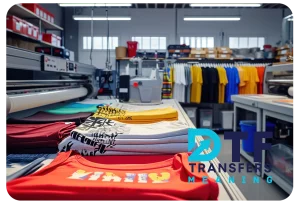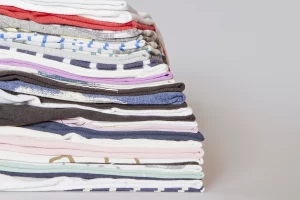Table of contents
Introduction
Cold peel printing, an innovative method in the textile industry, offers unparalleled quality and versatility. This guide provides an in-depth understanding of cold peel printing, its process, and its significance in the modern textile market.
On the contrary, hot peel printing is a popular technique in the world of Direct to Film (DTF) transfers; however, it is not recommended as it results in colors being off rather than bright. This method involves printing a design onto a special film, and then transferring it onto a fabric, like a t-shirt or a tote bag.
The Basics of Cold Peel Printing
Defining Cold Peel Printing
Cold peel printing is a method of printing a design onto a special transfer paper, which is then applied to the fabric. Unlike hot peel techniques, the transfer paper is removed after it cools, allowing for more detailed and durable prints.
How It Differs from Other Printing Methods
Cold peel printing stands out for its high resolution and color fidelity, distinguishing it from other methods like hot peel printing, which may have color limitations.
The Process of Cold Peel Printing
The process begins with printing the desired design onto cold peel transfer paper and then transferring it onto the fabric using a heat press. Once cooled, the paper is peeled off, revealing the print.
Required Equipment and Materials
Essential equipment includes a suitable printer, cold peel transfer paper, a heat press, and appropriate inks. Selecting quality materials is crucial for optimal results.
Advantages of Cold Peel Printing
Superior Quality and Durability
Cold peel prints are known for their sharp detail and durability, making them ideal for high-quality garment decoration.
Versatility in Application
This method is compatible with a wide range of fabrics, offering flexibility in application across various textile products.
Cons of Hot Peel Printing
Potential for Incomplete Transfers
If the film is peeled too quickly or unevenly, it can result in incomplete or patchy transfers. This requires a steady hand and experience to ensure consistent quality.
Color Limitation
Hot peel printing will result in off colors, as the garment has not cured completely, this technique will result in that.
Material Compatibility
Suitable Fabrics for Cold Peel Printing
Cold peel printing works effectively on most fabric types, including cotton, polyester, and blends. The method is particularly beneficial for thicker and darker fabrics.
Hot Printing Compatibility
Hot peel printing will not always work on any fabric; there will be the risk of peeling the transfer. While still hot, the colors will not be completely bright, and there is the risk that the transfer will not completely transfer in some fabrics.
Printing and Transferring Techniques
Best Practices in Printing
Ensuring consistent quality involves maintaining optimal printer settings and regularly calibrating the equipment.
Detailed Guide to the Transfer Process
The transfer process requires precise temperature and pressure settings on the heat press and careful timing for the cooling and peeling stages.
Conclusion
As you can see, we will always recommend using a cold peel printing technique rather than hot peel printing. Using hot peel printing may give you some results, but cold peel printing will ensure you get the most vibrant and quality results you need; please refer to our blog post on how to press DTF transfers so you can check even more detailed pressing instructions.





